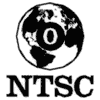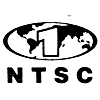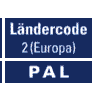|
|
|
|
|
|

Main DVD page | Breaking Down DVD Borders
By JAMES C. LUH
Michael de la Fuente, a student at Cornell University, thought viewing some Russian movies on DVD might help his language studies.
But video publishers lock DVD's with special "region codes," which prevent discs coded for one area, such as Russia, from being played on DVD hardware sold in the United States or other areas. This way, movie studios can orchestrate DVD releases around the world to match varying distribution arrangements.
De la Fuente ditched his Toshiba DVD player for a new Sampo model DVE-620, joining millions worldwide who have opted for "multiregion" or "region-free" DVD players that bypass these region codes. Such multiregion players are banned by the DVD industry, but they're an open secret in the marketplace and on the Internet.
Region codes aren't an issue for most US users, because "Region 1" discs for the United States and Canada are usually released first and offer the best selection of such special features as directors' commentaries. The small market for multiregion players is mostly driven by immigrants who want to watch movies from their home countries, language students and foreign-film enthusiasts, said Richard Stanton of Atlanta electronics retailer DVD City.
But multiregion players are much more popular abroad, allowing consumers to view both DVDs sold in their own countries and Region 1 DVDs purchased from stateside retailers. About 64 percent of DVD players in use in Europe are multiregion-capable, according to Understanding and Solutions, a Dunstable, England-based market analysis firm - although that share seems to be shrinking as the European DVD market grows, said Bill Foster, a senior consultant with the firm.
Examples of DVD player and disc markings:







|
Manufacturers' DVD licenses forbid them from offering multiregion players. But there are many ways to add multiregion capability to single-region players after they roll off the factory floor.
Some off-brand models let users bypass region locks by navigating secret but widely publicized "loophole" menus with the remote control. Sometimes, users have to download an old version of a player's firmware (the basic software stored in its circuits), then copy it onto a CD and load it in the player to "flash back" its firmware and enable the hidden menus.
Other players, particularly name-brand models, have to be physically modified to gain multiregion features. No engineering degree is necessary, though: Many stores sell pre-modified players, though often at a hefty premium over single-region models, retail do-it-yourself kits to modify a player, or will perform the surgery in their shops for a fee.
Users of computer DVD-ROM drives have gotten into the region-hacking game, too, using tools like the popular DVD Genie to bypass the region locks in sanctioned DVD playback software. Manufacturers publicly frown on region hacking and often refuse to honor warranties on players that have been region-modified. But Jim Taylor, an expert on DVD technology and author of an Internet frequently-asked-questions list on DVD (http://www.dvddemystified.com/dvdfaq.html), said that some firms market multiregion players through subsidiaries, while many others design players to be easy to modify. After all, he noted, a lot of consumers want multiregion players.
Mike Bowthorpe, a partner at Peterborough, England, retailer Link Electronics, put it bluntly: "If a player cannot be modified, the odds are it won't sell particularly well."
Others see things differently. Bruce Turnbull, a lawyer with the Washington office of Weil, Gotshal and Manges who represents the DVD Copy Control Association, the body that controls DVD technology licenses, said that manufacturers realize that protecting the movie industry's interests is crucial to DVD's success. When manufacturers have strayed, he said, the association has helped them understand and meet region-coding requirements.
Is region-code hacking illegal? Maybe not. "It's a complicated question and not a clear-cut situation," Tumbull said. He did say that the practice - when done on a commercial scale - might violate the federal Digital Millennium Copyright Act, but "no one's bringing that case, and no one's threatening to." (The Motion Picture Association of America, which has been outspoken on other DVD issues - in particular the DVD unlocking software DeCSS - declined comment for this story.)
Others have argued that region codes themselves are illegal - Australian competition regulators are investigating whether they're an illegal restraint of trade. De la Fuente called region codes annoying, but not unreasonable. "I don't want to complain like it's a travesty against human rights - it's business, I guess," he said, adding that it's also fair for DVD owners to do what they can to evade region codes.
Besides pressuring manufacturers, the DVD industry is also trying to outhack region-code hackers.
Columbia TriStar Home Entertainment and Warner Home Video have started adding "Regional Coding Enhancement" (RCE) to new Region 1 releases such as "Charlie's Angels" and "The Patriot." which won't work in a player modified to bypass region locks.
But, Taylor said. RCE discs will only trip up "auto-switching" players, not ones that require users to select a region code manually. What's more, region hackers have developed "smart" auto-switching players that play RCE discs.
Makers of DVD-ROM drives, meanwhile, must now employ a new scheme called Phase II Regional Playback Control (RPC II). In RPC II, region-code features are built into the DVD-ROM drive's circuits, so they can't be bypassed with software like DVD Genie.
Region hackers have countered RPC II with firmware patches that revert the drives back to the older, vulnerable RPC I scheme - and in turn, makers of DVD-ROM drives, have begun producing RPC II drives with non-rewriteable firmware. Region hackers apparently haven't beaten that. Yet.
Taylor sounded amused by the state of affairs. "You can never win with technology," he said, "because somebody will always work around your technology."
Note: I OCR'd this from a cut out Washington Post article that someone gave me. There is no date, but i'd guess it's from late 2000 or early 2001. I searched their site for it, so that I could link to it, but couldn't find it.
| ||||||||